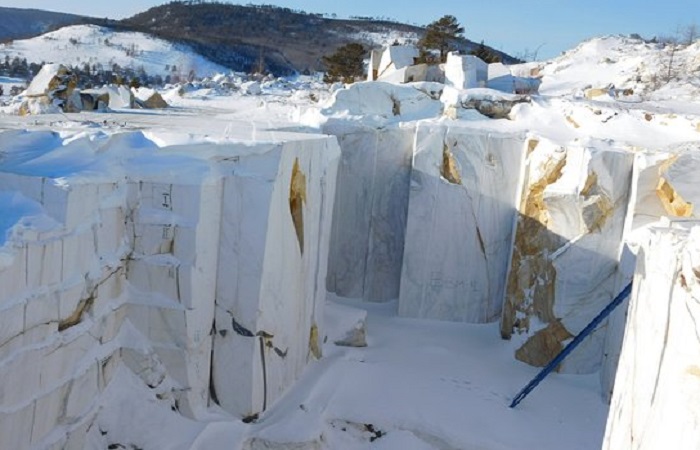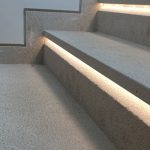A Brief Introduction to Natural Stone History and Formation

A Brief Introduction to Natural Stone History and Formation
For a brief introduction to natural stone, we will take you to the early ages and to the birth of the earth. From earth existence till now, we will discuss various types of natural stones formation. As we know, natural stone is one of the most commonly used materials used in homes and gardens. But have you ever stopped to wonder where your particular stone tiles, bricks, or flooring has come from? Natural stone was created thousands of years ago when the Earth was just a ball of mineral gases.
As these gases began to cool down, they compressed and solidified to form the beautiful spectacular world we know today. It was during this process that different types of natural stone was formed. The type of stone created totally depends on what type of minerals were combined at that time. This was a slow process that occurred over millions of years. As the Earth began to settle, many of these seams of stone were gradually pushed to the surface by heat and pressure, creating the large formations we see today.
Natural Solid Formation of Minerals
As we previously discussed, stone is a natural solid formation of one or many minerals. There are thousands types of stones which have been quarried through the centuries. Quarries are located all around the world. A majority of natural stone comes from Italy, Spain, Iran, Turkey, Mexico, China, Taiwan, India, Greece, Canada, France, and Brazil. The minerals in stone came from the same liquid and gas minerals that formed the earth.
The Earth developed as a massive body of gas and liquid minerals that slowly cooled and condensed to a solid core. Through pressure, the Earth’s crust began to form and heavy minerals were forced down to the core of the Earth where they were trapped. As the crust got thicker, it squeezed around the inner core which created intense pressure and heat from within the Earth. Crystals and other solid forms began to grow from the mineral vapors that were being released.
Earth Crust
As the Earth’s crust began to expand and erode, heat and pressure pushed the solid minerals up to the Earth’s surface which formed colossal rock beds. It took up to one-hundred million years to form some of these beds. Many of the beds are now used as quarries where the stone is mined. Most of these minerals can be identified by their color, hardness, and crystal formation. Crystals come in a variety of shapes and sizes. The wide array of these minerals is often difficult to identify. Many stones look very similar to each other; however, they are all very different.
Natural Stones are considered as low embodied energy, ready availability as a natural stone’s low embodied energy, ready availability as a naturally occurring material. Some of the high properties of stones are high thermal capacitance, no off-gas to impair indoor air quality, exceptional durability for low maintenance and structural permanence. There is enormous diversity of natural stones that encourages limitless designs potential. Aesthetically, everything is based on your views, on your imaginations. Stones are formed within the earth crust. Earth has its major contribution in variety and to enhance the creativity its’ provides. And these stones are having different properties, designs and etc. that cannot be duplicated in any form and anywhere. Let’s look a bit closer at where particular stones originate from and how they were formed.

Marble Stone
Marble is the result of limestone that has been altered through heat and pressure. It’s a versatile stone that can be used on virtually anything such as statues, stairs, walls, bathrooms, counter tops, and more. Usually seen in white, marble is also common in black and grey tints, and has great weather endurance.
Travertine Stone
Travertine is created when floodwaters wash through limestone, leaving mineral deposits throughout. As it dries out, the extra minerals solidify to gradually create a much denser material called travertine. This stone is good as a replacement for marble or granite, as it’s much lighter and easier to work with, yet still durable. For this reason travertine is often used on floors or walls, and is estimated to last around fifty years if maintained regularly. Each type of natural stone needs specific care. When choosing your stone, make sure you know exactly what chemicals to avoid and how to maintain the stone properly.
Quartzite Stone
Quartzite originates from sandstone that has been altered through heat and compression. The stone mainly comes in whites, but can also be found with brown, grey, or greenish tints to it. It is one of the hardest natural stone types, making it an excellent choice for building facades, countertops, and other structures that require heavy duty stones.
Granite Stone
Granite was originally an igneous stone that had been exposed to magma (lava) and altered through the exposure to different minerals. The stone is commonly found in countries that have seen high volcanic activity at some point, and is available in a huge variety of colors from black, brown, red, white, and almost all the colors in between. Granite is a great option for kitchens and bathrooms due to its antibacterial qualities.
Limestone
Limestone is the result of the compression of coral, seashells, and other ocean life together. There are two types of limestone, a harder type that is full of calcium, and a softer type with more magnesium. Hard limestone is often used in the building industry, or ground up and used in mortar due to its waterproof quality.
Basalt or Bluestone
Bluestone is sometimes referred to as basalt, and is one of the most common natural stones around the world. Bluestone forms through the alteration of lava, and because of this, is one of the closest stones to the Earth’s surface. Basalt is generally darker in color, and is used as house roofing and floor tiles because of its hard texture.
Slate Stone
Slate was created when shale and mudstone sediments were altered through heat and pressure. Available in colors from black, purple, blue, green, and grey, slate has become a popular choice for roofing as it can be cut thinly and withstand cold temperatures with minimal damage. Slate is also often used as floor tiling due to its enduring nature.
We hope you enjoyed this journey into the history of earth and natural stone formation. Feel free to contact us, in case of any questions.
To learn more about us, click here.
Send your price quotes directly to our WhatsApp through this Link: https://wa.link/ord5k8
Sources
www.bellstone.com.au/blog/natural-stone-formed
www.worldofstones.com/blog/natural-stone-history/
- Back To Articles
- Basalt, Bluestone, building industry, granite stone, limestone, magma, marble formation, marble introduction, marble origin, marble rocks, marble roots, marble stone, mudstone, natural stone formation, Natural Stone History, natural stone origin, Natural Stones, Quartzite, Quartzite Stone, Slate Stone, travertine stone
Article
Natural Stone Applications
- 22 December 2022
Iranian Stones Introduction According to Source and Quarry
- 21 December 2022
Technical Stone Introduction and Quarrying Procedures
- 21 December 2022
Categories
- blog757
- news1
- Specialized articles756













